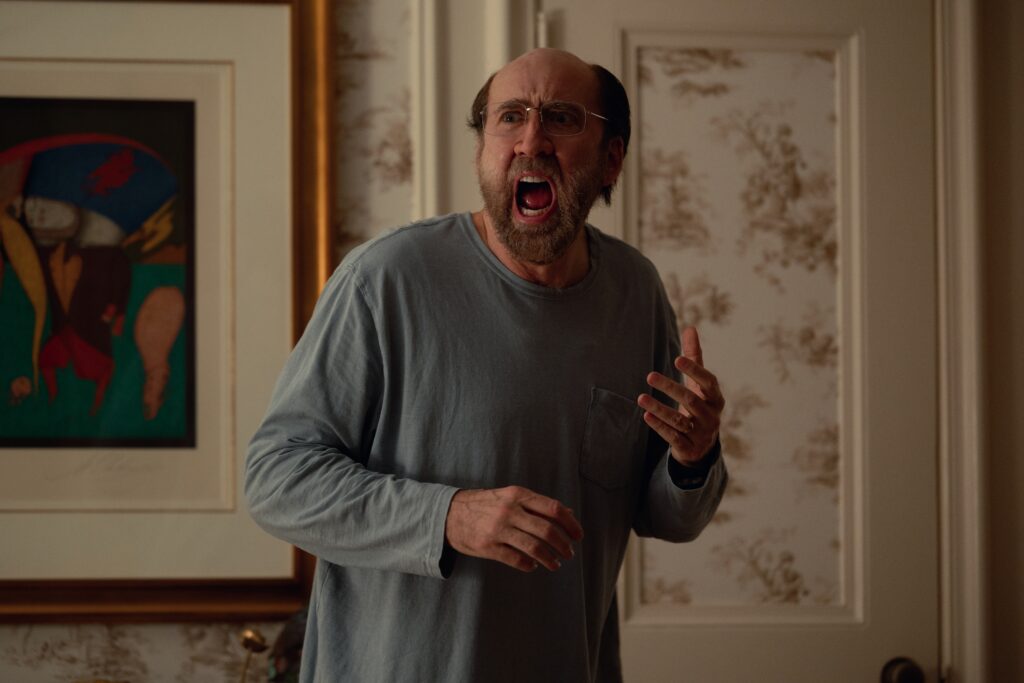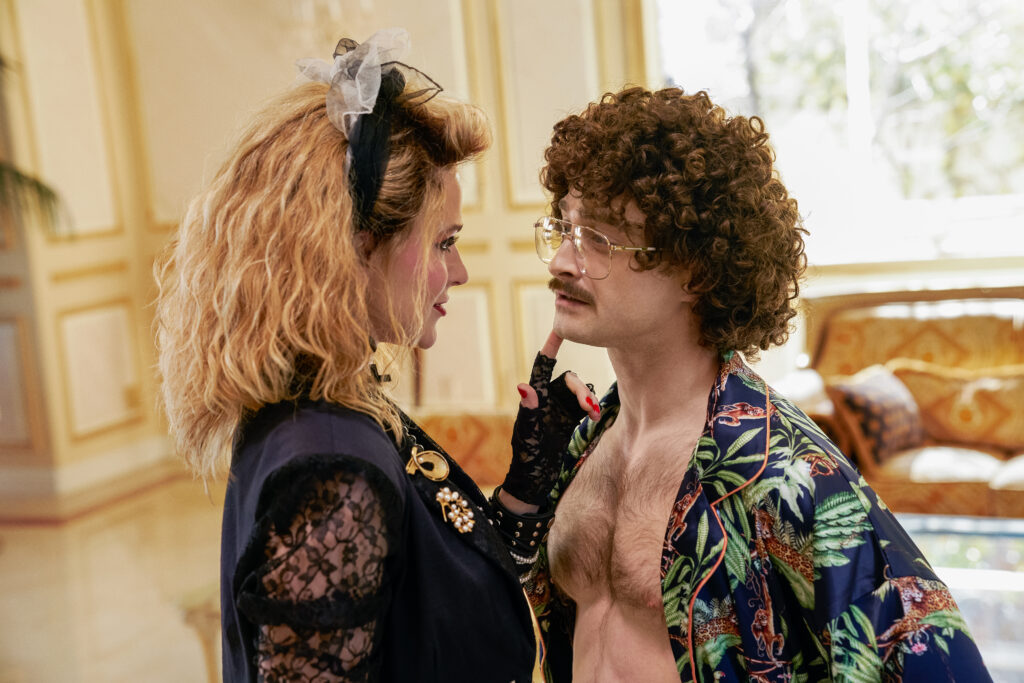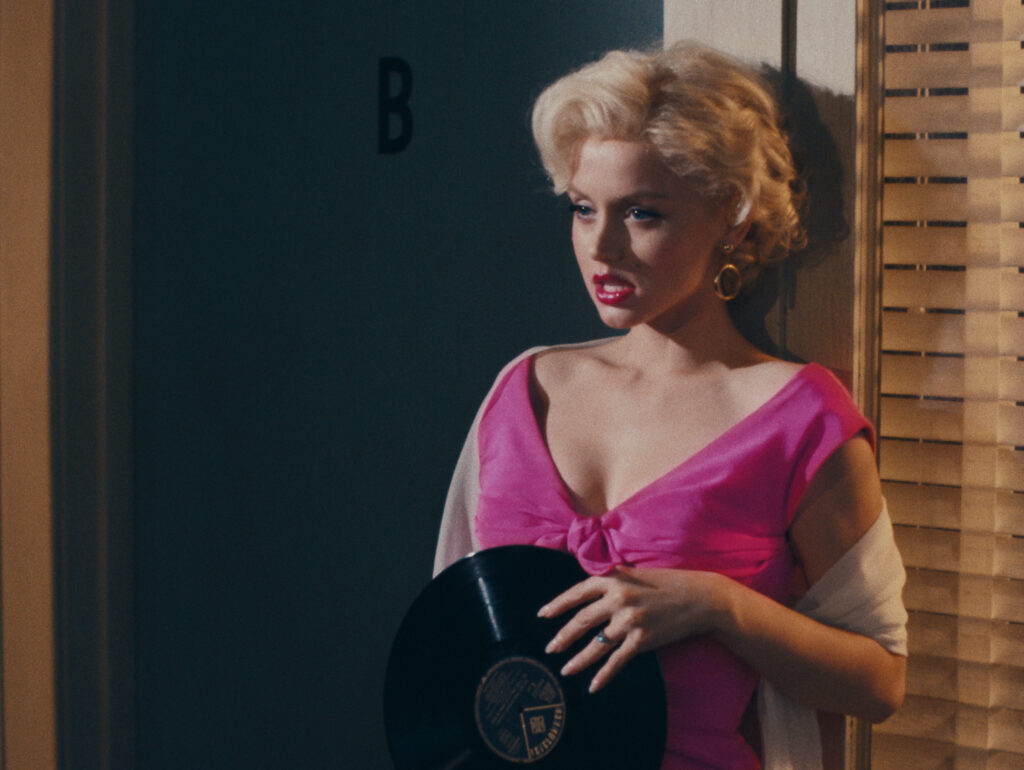July 2, 2024
by Carla Hay

Directed by Annie Baker
Culture Representation: Taking place in 1991, in western Massachusetts, the dramatic film “Janet Planet” features a predominantly white cast of characters (with a few black people) representing the working-class and middle-class.
Culture Clash: An 11-year-old girl and her single mother have various uncomfortable adjustments as the girl learns to be more independent and not as tolerant of the people who come in and out of her mother’s life.
Culture Audience: “Janet Planet” will appeal primarily to people who are fans of star Julianne Nicholson and don’t mind watching a slow-paced but well-acted movie about mother-daughter relationships.

Thoughtful and with nuanced performances, “Janet Planet” can be recommended to people who don’t mind watching slow-paced “slice of life” movies. This realistic drama shows the gradual shift in a mother-daughter relationship. Usually movies with this sort of topic has a lot of melodrama or plot developments that are often seen in soap operas. “Janet Planet” isn’t that type of movie. Rather, it shows how relationships can change during when life is mundane and uneventful.
“Janet Planet” is the feature-film debut of writer/director Annie Baker, a Pulitzer Prize-winning playwright. The movie had its world premiere at the 2023 Telluride Film Festival and screened at other festivals, including the 2023 New York Film Festival and the 2024 Berlin International Film Festival. “Janet Planet” takes place during the summer of 1991, in rural western Massachusetts.
The movie’s opening scene shows 11-year-old Lacy (played by Zoe Ziegler) calling her single mother on a pay phone while Lacy is at summer camp. Lacy wants to go home and makes an alarming statement when she tells her mother: “I’m going to kill myself if you don’t get me.” By the time that Lucy’s mother Janet (played by Julianne Nicholson) arrives to pick up Lacy, Lacy has changed her mind and wants to stay at the camp.
However, Janet has another reason for Lacy to come home: Janet’s live-in boyfriend Wayne (played by Will Patton), who’s about 15 to 20 years older than Janet, has had a motorcycle accident and is recovering at home. Lacy actually doesn’t need to be at home, but because Janet insists that Lacy come home, it’s an indication that Janet wants Lacy there for emotional support. Lacy’s father is not seen or mentioned in the movie.
Lacy doesn’t want to introduce Janet to the other people at camp, which is the first sign that things are somewhat tense between Lacy and Janet. Lacy tells Janet that she wants to stay at camp. But Janet says, “I already convinced them to give me part of the deposit back.”
Lacy, by her own admission, is an introverted loner who has a hard time making friends with people. She likes to read and draw in her spare time. Lacy also takes piano lessons from a an elderly woman named Davina (played by Mary Shultz), who is kind and patient. Lacy is not rude but she doesn’t have a “cute and cuddly” personality either. “Janet Planet” is about how Lacy stops blindly worshipping her mother and sees Janet for the flawed human being that she is.
Janet is a self-employed licensed acupuncturist who has a home office. The name of her business is Janet Planet. Unlike Lacy, who has a very independent personality, Janet constantly craves approval and companionship. It’s one of the reasons why Janet lets people into her life who might not be good for her. At one point in the movie, Janet makes a comment that she’s not beautiful but she can get people to fall in love with her.
Janet and Lacy have the type of household where when they have meals at the same table as other people, there is little or no conversation. When Janet and Lacy (who often sleep in the same bed together) have any heart-to-heart talks, Janet gets uncomfortable if Lacy says things that Janet doesn’t want to hear. Janet gives the impression that she’d rather not hear about any angst that Lacy might be feeling.
Here’s an example of one of their conversations: Lacy tells Janet, “You know what’s funny? Every moment in my life is hell.” Janet replies, “I don’t like it when you say things like that. You seem pretty happy.” Lacy says, “It’s hell. I don’t think it will last though.” Janet admits, “I’m actually pretty unhappy too.”
“Janet Planet” is divided into three chapters, with each chapter focusing on how a different person enters the lives of Janet and Lacy and how each person’s presence affects Janet and Lacy. The first chapter is about Wayne’s effect on this small family. The second chapter is about Janet reconnecting with a long-lost friend named Regina (played by Sophie Okonedo), an actress in a puppet theater collective that has a hippie lifestyle. The third chapter is about Janet spending time with Avi (played by Elias Koteas), the cult-like leader of the puppet theater collective.
Wayne is sullen and keeps mostly to himself, but he has a nasty temper that affects his relationship with Janet. Wayne also seems to have mental health issues because he is seen wandering around aimlessly on the front lawn at night. Regina is friendly and quirky and doesn’t talk down Lacy. Regina needs a place to stay, so Janet lets Regina temporarily live in the household. Avi, who is Regina’s ex-lover, thinks of himself as an intellectual philosopher, but everything about him seems like he’s a con artist. It isn’t long before Avi makes it known to Janet that he’s interested in getting romantically involved with her.
“Janet Planet” doesn’t always have clear resolutions for the dilemmas and conflicts presented in the story because people tend to drift in and out of Janet’s life without necessarily having closure. Lacy is not shown bonding with anyone her age except for a day when Wayne’s daughter Sequoia (played by Edie Moon Kearns) spends time with Wayne, Janet and Lacy at a shopping mall. Wayne has a visitation rights arrangement with Sequoia’s mother, who is briefly heard but not seen in the movie when Sequoia leaves for this visit and her mother says some words of greeting in a friendly tone. Lacy and Sequoia get along with each other almost immediately and have some fun inventing their own language.
After this get-together, Lacy asks Wayne why Sequoia doesn’t live part-time with him. Wayne refuses to answer the question and gets upset, which obviously means that it’s a sore subject for him. Very little is mentioned about Wayne’s family history except that Wayne has grandchildren and he has a 20-year-old son named Eric, who “lives in California and Iraq,” according to Wayne. Wayne’s grandchildren and Eric are not seen in the movie. It can be presumed by Wayne’s statement that Eric is in the military and is stationed in Iraq.
One of the best things about “Janet Planet” is the talented performance by Ziegler, who makes her feature-film debut in “Janet Planet.” This movie is named after Janet, but it’s through Lacy’s perspective that the story has its heart and soul. Ziegler’s performance is very natural and never once looks like she’s trying too hard to be a good actress. “Janet Planet” doesn’t have any grand, sweeping statements about life but it does offer some pointed observations about the time in everyone’s life when a child begins to see parenthood in less idealistic ways.
A24 released “Janet Planet” in select U.S. cinemas on June 21, 2024, with an expansion to more U.S. cinemas on June 28, 2024.







